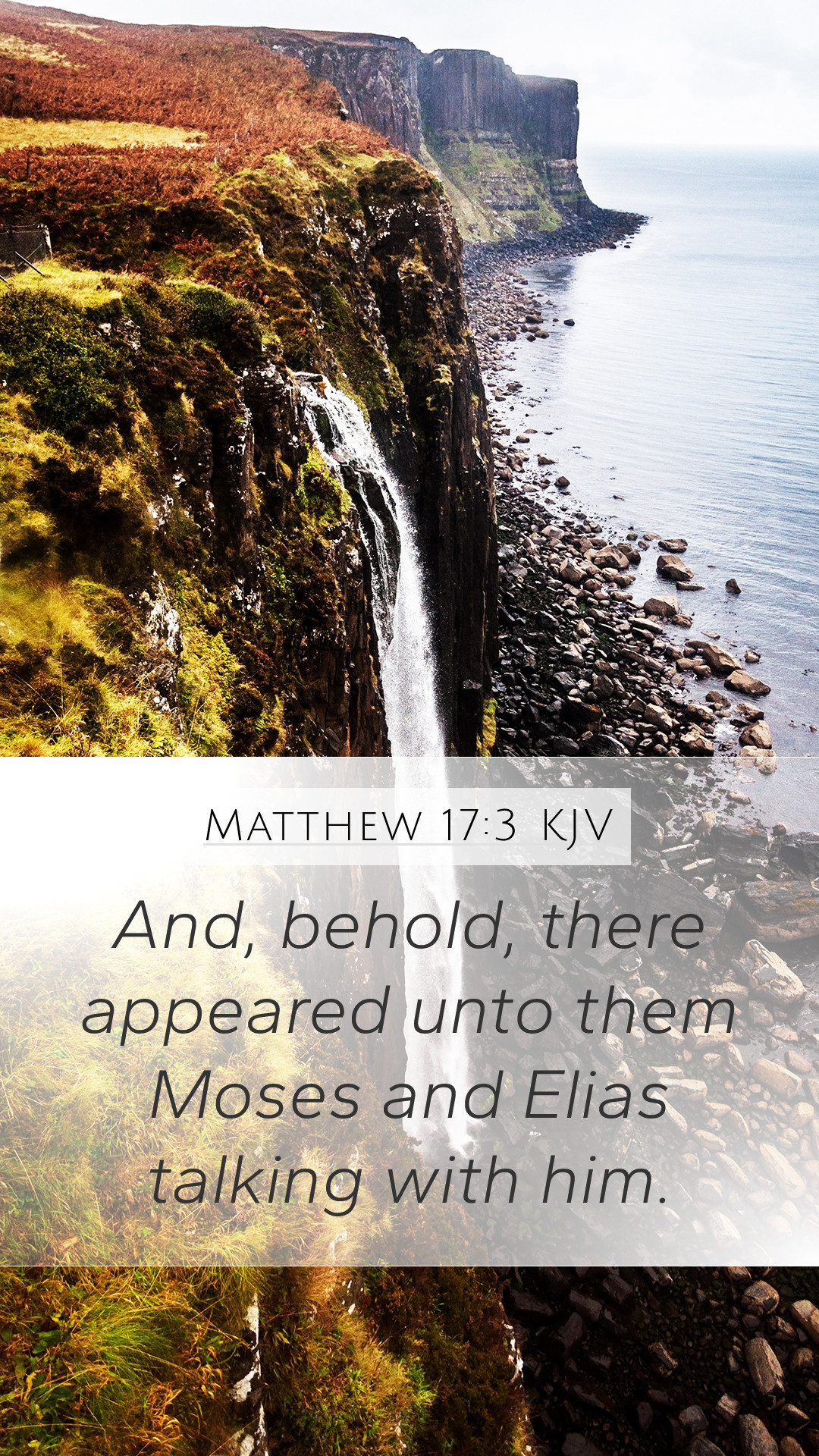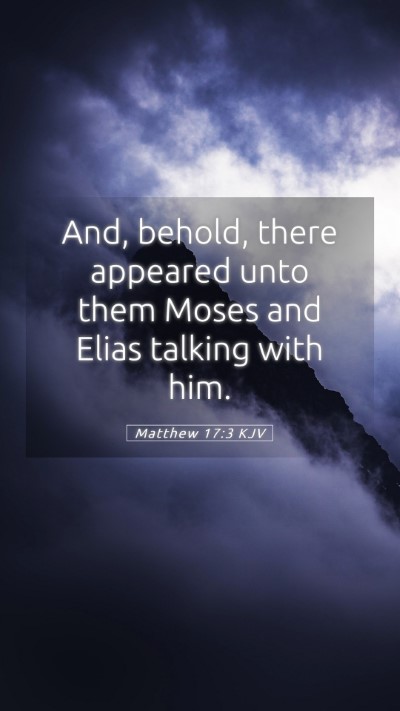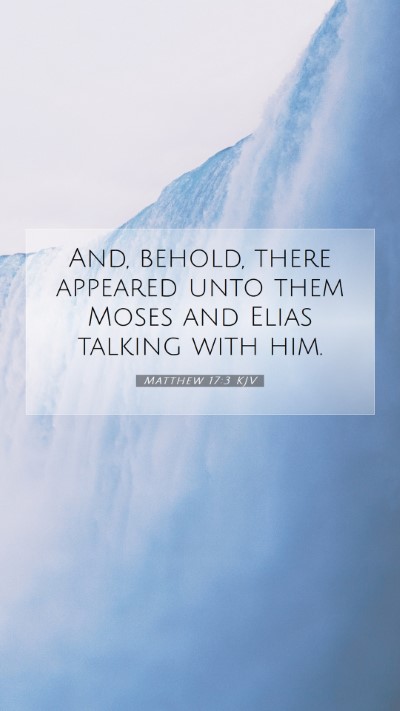Bible Verse Meaning and Commentary on Matthew 17:3
Matthew 17:3 states, "And behold, there appeared to them Moses and Elijah, talking with him." This verse occurs during the transfiguration of Jesus, a significant event in the New Testament that highlights the divine nature of Jesus through a supernatural experience.
Understanding Matthew 17:3
This verse features the appearance of two critical figures from the Old Testament: Moses and Elijah. Each of these prophets represents pivotal aspects of Jewish faith and prophecy. Moses symbolizes the Law, having led the Israelites and established the covenant with God, while Elijah represents the prophets, being a significant figure known for his zeal for God's law and for calling Israel back to faithfulness.
Insights from Public Domain Commentaries
-
Matthew Henry's Commentary:
Henry emphasizes the importance of the appearance of Moses and Elijah, arguing that it signifies Jesus' fulfillment of both the Law and the Prophets. Their conversation with Jesus illustrates that He is the culmination of the scriptures, confirming His authority as the Messiah.
-
Albert Barnes' Notes:
Barnes notes that the presence of Moses and Elijah serves to authenticate Jesus’ ministry. Such an appearance signifies divine endorsement of Jesus’ mission and prepares the disciples for the significant role Jesus will play in the history of salvation.
-
Adam Clarke's Commentary:
Clarke discusses the nature of the dialogue between Jesus, Moses, and Elijah, although the exact words spoken are not recorded. He proposes that their conversation may have involved discussions about Jesus' impending sacrifice and the establishment of the New Covenant.
Symbolism and Significance
The symbolism of Moses and Elijah alongside Jesus conveys the message that the entirety of the Old Testament points towards Him. Their appearance serves as a reminder that Jesus is both the fulfillment of the Law and the prophetic promises of the Old Testament.
Application for Today
This verse encourages believers to understand Jesus as the fulfillment of God’s promises and the embodiment of divine revelation. It calls for a deeper comprehension of both the Old and New Testaments, providing rich opportunities for Bible study insights and Bible verse interpretations.
Bible Cross References
- Luke 9:30-31: Expands on the appearance of Moses and Elijah and their conversation regarding Jesus' departure.
- Hebrews 1:1-2: Indicates that God spoke through the prophets and in these last days has spoken through His Son, confirming Jesus' supremacy.
- Matthew 5:17: Jesus states that He came not to abolish the Law but to fulfill it, which resonates with the presence of Moses.
- Malachi 4:5-6: Prophecy about the return of Elijah before the great day of the Lord, which ties into Elijah's appearance on the mountain.
- Romans 3:21-22: Discusses the righteousness of God as revealed through faith in Jesus Christ for all who believe, linking to the theme of redemption present in the Transfiguration.
Conclusion
Matthew 17:3 serves as a profound reminder of the continuity between the Old and New Testaments and the integral role that Jesus plays as the Messiah. For those exploring Bible verse meanings and seeking Bible study resources, this passage offers fertile ground for reflection on the significance of Jesus’ life and mission in the context of biblical history.
Further Study Suggestions
For those interested in online Bible study or joining Bible study groups, consider examining parallel gospel accounts and other Old Testament prophecies about the coming Messiah to enhance your Bible study lessons.


